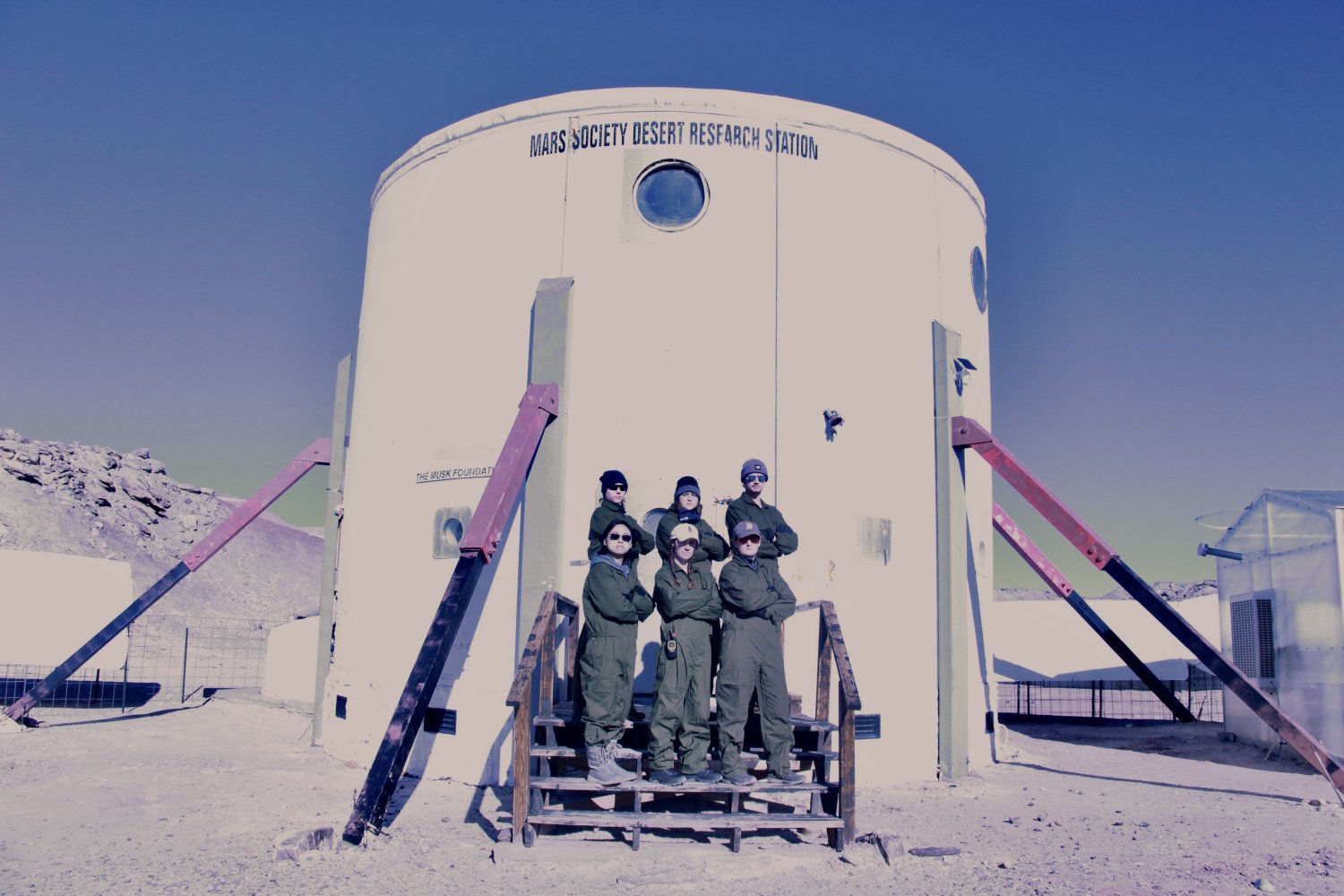A Mars Mission in the Utah Desert
Early in the year, a mixed team of researchers, including Madelyn Hoying, a PhD candidate from the Harvard-MIT Program in Health Sciences and Technology, and Wing Lam (Nicole) Chan, an aeronautics and astronautics undergraduate at MIT, participated in a simulated Mars mission at the Mars Desert Research Station (MDRS). This facility, located in Utah, is renowned for its Mars-like environment, providing a realistic backdrop for space research simulations. The team, known as Crew 290, engaged in Project MADMEN (Martian Analysis and Detection of Microbial Environments), a two-week immersive program designed to emulate a real-life quest for life on Mars.
The idea for this mission was inspired by Hoying’s previous project, Project ALIEN, conceived during her participation in the NASA RASC-AL competition at Duquesne University. Following that experience, she refined the mission’s goals and procedures to fit the Mars analog setting at MDRS. Hoying led the team as both commander and health and safety officer, while Chan documented their daily activities and managed communications as the crew’s journalist.
Diverse Team, Unified Goal
The crew, comprising six members from various institutions, brought a diverse range of skills and backgrounds to the mission. This diversity included members like Rebecca McCallin from Duquesne University, Benjamin Kazimer from MIT Lincoln Laboratory, Anja Sheppard from the University of Michigan, and Anna Tretiakova from Boston University. This team unity was crucial, as highlighted by Hoying’s leadership and Chan’s chronicling of the crew’s experiences, which vividly captured the essence of living on the Red Planet.
Chan admitted to initial reservations about the isolation and mundane routine, but these concerns were quickly overshadowed by the authenticity and excitement of their Martian simulation. Wearing EVA suits and performing tasks in the rugged desert terrain made their scientific endeavor feel genuinely otherworldly.
Reflecting on Leadership and Team Dynamics
Under Hoying’s experienced leadership, the crew navigated the complexities of their scientific and logistical tasks with precision and care. They managed multiple objectives, from collecting soil samples for microbial analysis to operating advanced robotic tools like REMI, a ground-penetrating radar robot designed to scan the Martian-like soil of the Utah desert.
The project’s success was not just in scientific data collection but also in maintaining high morale and effective team dynamics under challenging conditions. Hoying used daily questionnaires to monitor and manage the crew’s mental and physical well-being, ensuring that mission goals did not compromise safety.
Conclusion and Legacy
As the simulation concluded, the insights gained extended beyond scientific data to include valuable lessons in human resilience and teamwork in extreme environments. The mission underscored the importance of psychological well-being and social support, as shared experiences and responsibilities strengthened the bonds between crew members.
The legacy of Crew 290’s mission at MDRS highlights the potential for future collaborative space missions and sets a precedent for integrating rigorous scientific exploration with the human elements of space travel. This blend of science and human experience is crucial as we prepare for actual missions to Mars and beyond, ensuring that astronauts are not only scientifically prepared but also psychologically resilient.
Beneficial Addition:
Exploring how human teams can live and work effectively on Mars provides invaluable insights into the social dynamics and psychological challenges of long-term space travel. Studies like Project MADMEN help scientists and astronauts prepare better for future missions, focusing not only on the technical requirements but also on ensuring the well-being and cohesion of space crews. These simulations are pivotal in shaping the protocols and support systems that will be used on real interplanetary missions, ensuring that humanity’s journey into space is safe, sustainable, and successful.
